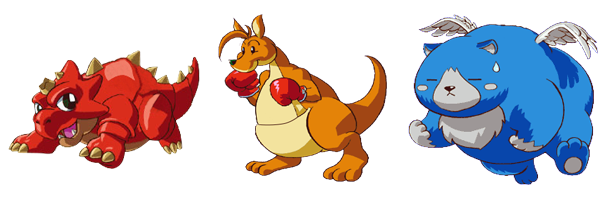What do you Love about Oracle of Seasons?
Posted on October 07 2013 by Legacy Staff

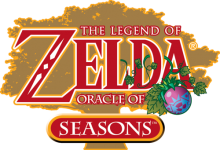 I apologize to those who made requests for the next game discussion, but since my last article covered Oracle of Ages, I figured the next natural step would be to write about its counterpart: Oracle of Seasons. I personally prefer this game of the two, as I feel the season-changing mechanic is a little more creative and fun to play with, the sometimes excruciating challenges of Ages (Goron Dance, anyone?) are ramped down, and the land of Subrosia is present. Also, before I had reached the point in my life where I had money to buy games on my own, my mother would only get one of these games for me. I chose Oracle of Seasons because it was red. Yeah, I was the kind of kid that would make important decisions based on insignificant details. However, I am glad that it worked out in my favor. Until the recent release of the pair on the 3DS eShop, I didn’t have Oracle of Ages. So my preference for Seasons based a lot on nostalgia may seem biased, but this is why I ask my fellow Zelda fans to contribute to the discussion. When you comment below, I not only want to hear what you love about Oracle of Seasons, but which game of the two you prefer. Hit the jump to read on!
I apologize to those who made requests for the next game discussion, but since my last article covered Oracle of Ages, I figured the next natural step would be to write about its counterpart: Oracle of Seasons. I personally prefer this game of the two, as I feel the season-changing mechanic is a little more creative and fun to play with, the sometimes excruciating challenges of Ages (Goron Dance, anyone?) are ramped down, and the land of Subrosia is present. Also, before I had reached the point in my life where I had money to buy games on my own, my mother would only get one of these games for me. I chose Oracle of Seasons because it was red. Yeah, I was the kind of kid that would make important decisions based on insignificant details. However, I am glad that it worked out in my favor. Until the recent release of the pair on the 3DS eShop, I didn’t have Oracle of Ages. So my preference for Seasons based a lot on nostalgia may seem biased, but this is why I ask my fellow Zelda fans to contribute to the discussion. When you comment below, I not only want to hear what you love about Oracle of Seasons, but which game of the two you prefer. Hit the jump to read on!
Chaotic Season Changes
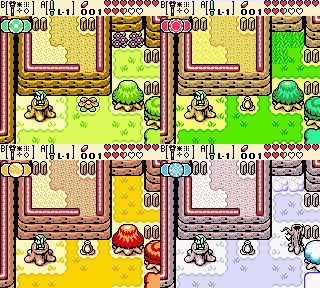 As it was for Oracle of Ages, one of the things I love most about this game is the central mechanic. However I prefer this mechanic to that of Ages, as changing the seasons to clear paths and progress further was brand new to the Zelda series, whereas time travel was not. Furthermore, the fun of exploring the large open world was quadrupled, in that there were four different seasons, therefore four different versions of each square on the map. This makes finding secrets four times as tricky and will have you scouring the land of Holodrum for hours. The jewel quest is a perfect example of necessary season changes to open paths and discover treasure. Admittedly, some of the season differences were odd, making it obvious that the game creators didn’t know how else to make a particular season helpful. For instance, summer and winter have obvious advantages: in the winter, lakes freeze over, allowing Link to traverse across water without drowning, and in the summer vines grow rampant, allowing Link to climb to new areas. But what do we get with spring and fall, the two seasons in between the extremes? The Zelda team took some creative liberties and made some stuff up: in the spring, giant flowers could shoot you in the air and in the fall, mushrooms are ripe for picking, clearing paths ahead. Of course these make no sense in real life, but I’m okay with it since this is a fantasy genre and most things in Zelda don’t make sense anyway. Who cares? It’s a fantasy adventure series, so nitpicking at this small flaw (if you would even call it one) is pointless. Lastly, I like the season changes for their simple aesthetic appeal. Almost every time you enter a new area, the season changes. Of course this will affect the area itself, but to me it’s nice just to get a new visual. It’s a small, refreshing feature that does little but keeps the gameplay exciting to me.
As it was for Oracle of Ages, one of the things I love most about this game is the central mechanic. However I prefer this mechanic to that of Ages, as changing the seasons to clear paths and progress further was brand new to the Zelda series, whereas time travel was not. Furthermore, the fun of exploring the large open world was quadrupled, in that there were four different seasons, therefore four different versions of each square on the map. This makes finding secrets four times as tricky and will have you scouring the land of Holodrum for hours. The jewel quest is a perfect example of necessary season changes to open paths and discover treasure. Admittedly, some of the season differences were odd, making it obvious that the game creators didn’t know how else to make a particular season helpful. For instance, summer and winter have obvious advantages: in the winter, lakes freeze over, allowing Link to traverse across water without drowning, and in the summer vines grow rampant, allowing Link to climb to new areas. But what do we get with spring and fall, the two seasons in between the extremes? The Zelda team took some creative liberties and made some stuff up: in the spring, giant flowers could shoot you in the air and in the fall, mushrooms are ripe for picking, clearing paths ahead. Of course these make no sense in real life, but I’m okay with it since this is a fantasy genre and most things in Zelda don’t make sense anyway. Who cares? It’s a fantasy adventure series, so nitpicking at this small flaw (if you would even call it one) is pointless. Lastly, I like the season changes for their simple aesthetic appeal. Almost every time you enter a new area, the season changes. Of course this will affect the area itself, but to me it’s nice just to get a new visual. It’s a small, refreshing feature that does little but keeps the gameplay exciting to me.
General Onox
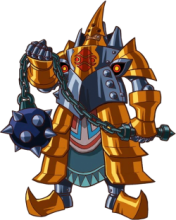 The “General of Darkness,” Onox is the complete opposite of his Ages counterpart, Veran. He is male, relies on brute strength, and is much more physically intimidating. In my last article, which discussed Oracle of Ages, I said that a villain who relied on wisdom and mental trickery was fitting for a game starring Nayru. Well, the same applies here. Din, the Goddess of Power, is the damsel in distress this time, and her captor is a huge, imposing, armored, ball and chain wielding brute. While I prefer the less stereotypical Veran, I appreciate that the Zelda team created opposite forces for Link to face in each game, and matched their qualities to the damsel they kidnapped. In all honesty, there isn’t much say about Onox. He is a very typical villain in pretty much every way. The reason I include him, however, is the reason stated before: he is a foil to Veran and matches the main characteristic attributed to Din. The battle with him and his dragon form is quite challenging, not to mention… he just looks cool, doesn’t he?
The “General of Darkness,” Onox is the complete opposite of his Ages counterpart, Veran. He is male, relies on brute strength, and is much more physically intimidating. In my last article, which discussed Oracle of Ages, I said that a villain who relied on wisdom and mental trickery was fitting for a game starring Nayru. Well, the same applies here. Din, the Goddess of Power, is the damsel in distress this time, and her captor is a huge, imposing, armored, ball and chain wielding brute. While I prefer the less stereotypical Veran, I appreciate that the Zelda team created opposite forces for Link to face in each game, and matched their qualities to the damsel they kidnapped. In all honesty, there isn’t much say about Onox. He is a very typical villain in pretty much every way. The reason I include him, however, is the reason stated before: he is a foil to Veran and matches the main characteristic attributed to Din. The battle with him and his dragon form is quite challenging, not to mention… he just looks cool, doesn’t he?
Animal Partners
This is something I could’ve included in my Oracle of Ages article, but somehow it skipped my mind, and I apologize. Good thing these three awesome characters appear in this game, too! Animal partners are not new to the Zelda series. We are all familiar with the Loftwing from Skyward Sword, and of course Epona from several titles. But what’s great about Ricky, Dimitri, and Moosh is that they are either purely Zelda animals or real-life animals with a touch of something fantastical. Ricky is a kangaroo with a mean punch, Dimitri is an out-of-his-element Dodongo that swims and eats enemies whole, and Moosh is a blue bear with wings. They are all creative and unique, and it is clear that some thought went behind their designs and implementations. Being able to interact with all three throughout both games keeps them fresh and exciting to progress through, and you can even obtain a flute that calls one of them anytime you want. Picking a favorite can be difficult, so choose wisely!
Old Bosses Return
 This is something the Zelda series has done several times before Oracle of Seasons, and even more times after. What’s notable about the bosses this time around, however, is that almost all of them are from the original The Legend of Zelda on NES. This can be seen as a good or bad thing. It’s bad because it lacks creativity and the excitement of discovering the boss of a dungeon is diminished. It can also give away the monster’s strengths and weaknesses to those players who remember encounters from previous games. On the other hand, recycling bosses can be a good thing because it redesigns fierce creatures that were limited to the 8-bit graphics of the eighties, bringing them to their intended glory. It’s also pleasantly nostalgic.
This is something the Zelda series has done several times before Oracle of Seasons, and even more times after. What’s notable about the bosses this time around, however, is that almost all of them are from the original The Legend of Zelda on NES. This can be seen as a good or bad thing. It’s bad because it lacks creativity and the excitement of discovering the boss of a dungeon is diminished. It can also give away the monster’s strengths and weaknesses to those players who remember encounters from previous games. On the other hand, recycling bosses can be a good thing because it redesigns fierce creatures that were limited to the 8-bit graphics of the eighties, bringing them to their intended glory. It’s also pleasantly nostalgic.
 Frankly, I do not mind that Seasons‘ bosses were rehashed versions of old enemies, however I wish that Nintendo used bosses from other games, too. If I remember correctly, all eight bosses with the exceptions of Mothula and the Medusa Head were introduced in the original Zelda title. Why not have one or two bosses from each game leading up to Oracle of Seasons? I would have loved to have seen Barba or Thunderbird resurrected in a more flashy, powerful game. 3D bosses from Ocarina of Time would have also been interesting to fight in a 2D landscape. Morpha or Bongo Bongo would have been great choices. Nevertheless, I appreciate Nintendo’s harkening back to the bosses that kicked off the franchise. New bosses are certainly exciting, but seeing an old one return is always fun and, if executed well, challenging. How many times have we fought Gohma in the series? And every time, there’s a new method to defeating her. Which bosses would you like to see reimagined in a future game?
Frankly, I do not mind that Seasons‘ bosses were rehashed versions of old enemies, however I wish that Nintendo used bosses from other games, too. If I remember correctly, all eight bosses with the exceptions of Mothula and the Medusa Head were introduced in the original Zelda title. Why not have one or two bosses from each game leading up to Oracle of Seasons? I would have loved to have seen Barba or Thunderbird resurrected in a more flashy, powerful game. 3D bosses from Ocarina of Time would have also been interesting to fight in a 2D landscape. Morpha or Bongo Bongo would have been great choices. Nevertheless, I appreciate Nintendo’s harkening back to the bosses that kicked off the franchise. New bosses are certainly exciting, but seeing an old one return is always fun and, if executed well, challenging. How many times have we fought Gohma in the series? And every time, there’s a new method to defeating her. Which bosses would you like to see reimagined in a future game?
Subrosia
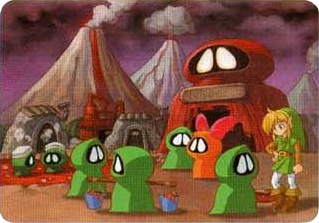 When General Onox throws the seasons into chaos, the Temple of Seasons collapses and finds its way to the land of Subrosia, a mysterious volcanic area inhabited by creatures strangely reminiscent to the Jawas from Star Wars. It is unclear where exactly this land is located. The portals that transport you there suggest that it is a parallel world, however the fact that the Temple of Seasons “fell” into it implies that Subrosia is somehow below Holodrum… perhaps under the surface. If that’s the case, welcome to Zelda’s version of Hell, ladies and gentlemen! However it’s a pretty friendly place, if I do say so myself. The Subrosians are a mostly friendly people, who live their lives much like the inhabitants of any other world. They run businesses and participate in several activities, including dancing (their interpretation is less impressive but much more tolerable than that of the Gorons). There are a few reasons I like Subrosia. First of all, it expands an already huge world map and gives us an entirely new area to explore. I also like that the Subrosian currency is different. Digging around for ore was a new approach that led to the discovery of other valuable items, such as the Star-Shaped Ore. Of course, you could always dig for rupees, but let’s be honest… unless you were really desperate for rupees, you never resorted to this. Lastly, I just like the atmosphere. It’s comical to me that a place so similar to Hell can be inhabited by such friendly, laid-back, and, quite frankly, normal creatures. While their environment seems much harsher than that of Holodrum (or any other setting for a Zelda game), they live just as we do. There’s a simplistic universality to it, but the added touch of a cute species inhabiting the most frightening of environments makes the land of Subrosia a humorous and therefore positive addition to the many lands we’ve seen in the Zelda series.
When General Onox throws the seasons into chaos, the Temple of Seasons collapses and finds its way to the land of Subrosia, a mysterious volcanic area inhabited by creatures strangely reminiscent to the Jawas from Star Wars. It is unclear where exactly this land is located. The portals that transport you there suggest that it is a parallel world, however the fact that the Temple of Seasons “fell” into it implies that Subrosia is somehow below Holodrum… perhaps under the surface. If that’s the case, welcome to Zelda’s version of Hell, ladies and gentlemen! However it’s a pretty friendly place, if I do say so myself. The Subrosians are a mostly friendly people, who live their lives much like the inhabitants of any other world. They run businesses and participate in several activities, including dancing (their interpretation is less impressive but much more tolerable than that of the Gorons). There are a few reasons I like Subrosia. First of all, it expands an already huge world map and gives us an entirely new area to explore. I also like that the Subrosian currency is different. Digging around for ore was a new approach that led to the discovery of other valuable items, such as the Star-Shaped Ore. Of course, you could always dig for rupees, but let’s be honest… unless you were really desperate for rupees, you never resorted to this. Lastly, I just like the atmosphere. It’s comical to me that a place so similar to Hell can be inhabited by such friendly, laid-back, and, quite frankly, normal creatures. While their environment seems much harsher than that of Holodrum (or any other setting for a Zelda game), they live just as we do. There’s a simplistic universality to it, but the added touch of a cute species inhabiting the most frightening of environments makes the land of Subrosia a humorous and therefore positive addition to the many lands we’ve seen in the Zelda series.
What do you all love about Oracle of Seasons? Do you prefer it to Oracle of Ages? Why or why not? Comment below, and let’s talk about it!
Games already discussed:
The Legend of Zelda
The Adventure of Link
A Link to the Past
Link’s Awakening
Oracle of Ages
The Wind Waker
Four Swords
Four Swords Adventures
Twilight Princess
Phantom Hourglass
Skyward Sword



